I like honey. 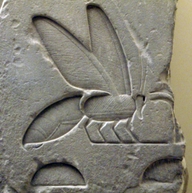 I remember peanut butter and honey sandwiches that my grandmother used to make me when we visited her in summertime. I recalled when my aunt taught me to substitute honey for the small amount of sugar in bread-making, and thinking it made all of the difference in the world to the taste of fresh bread, especially when topped with creamed honey butter. A childhood facisnation with Egypt that still resonates with me has me seek for honey and bee symbolism in Egyptian hieroglyphics. When my throat or mouth is sore, I am drawn to Mānuka honey.It is a staple in my food storage, and a sweet Asian variety was a treasured gift from a visiting Korean exchange student when he stayed with us years ago.
I remember peanut butter and honey sandwiches that my grandmother used to make me when we visited her in summertime. I recalled when my aunt taught me to substitute honey for the small amount of sugar in bread-making, and thinking it made all of the difference in the world to the taste of fresh bread, especially when topped with creamed honey butter. A childhood facisnation with Egypt that still resonates with me has me seek for honey and bee symbolism in Egyptian hieroglyphics. When my throat or mouth is sore, I am drawn to Mānuka honey.It is a staple in my food storage, and a sweet Asian variety was a treasured gift from a visiting Korean exchange student when he stayed with us years ago.
But that is not all. I also love Deborah, 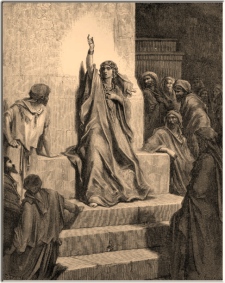 the righteous judge and prophetess. In Hebrew, her name, דְּבוֹרָה, translates as “bee”. How can I not think of her when I think of honey and beehives? In the Book of Judges, Deborah is portrayed and a strong, independent woman. Her wise judgment and her keen counter attack refuted the Canaanites and brought peace to Israel for 40 years. (1) And in the beautiful Hebrew Song of Deborah, she says that the “mountains flowed before the Lord.” In centuries to follow, the study of the flow of matter, rheology developed; in this study, a dimensionless number was named after Deborah, because of her “mountains flowed” poetry. Used often in structural engineering to describe the elasticity of a compound, the larger the Deborah number, the stronger the compound; the smaller Deborah number, the more fluid the compound. In considering this, I can’t help but again envision the crystallization of honey from a liquid to a solid…
the righteous judge and prophetess. In Hebrew, her name, דְּבוֹרָה, translates as “bee”. How can I not think of her when I think of honey and beehives? In the Book of Judges, Deborah is portrayed and a strong, independent woman. Her wise judgment and her keen counter attack refuted the Canaanites and brought peace to Israel for 40 years. (1) And in the beautiful Hebrew Song of Deborah, she says that the “mountains flowed before the Lord.” In centuries to follow, the study of the flow of matter, rheology developed; in this study, a dimensionless number was named after Deborah, because of her “mountains flowed” poetry. Used often in structural engineering to describe the elasticity of a compound, the larger the Deborah number, the stronger the compound; the smaller Deborah number, the more fluid the compound. In considering this, I can’t help but again envision the crystallization of honey from a liquid to a solid…
So when Elder Ballard spoke of honey, and bees and beehives in his general conference address, I was openly interested. From his Be Anxiously Engaged Speech:
The beehive has always been an important symbol in our Church history. We learn in the Book of Mormon that the Jaredites carried honeybees with them (see Ether 2:3) when they journeyed to the Americas thousands of years ago. Brigham Young chose the beehive as a symbol to encourage and inspire the cooperative energy necessary among the pioneers to transform the barren desert wasteland surrounding the Great Salt Lake into the fertile valleys we have today. We are the beneficiaries of their collective vision and industry.
The beehive symbol is found in both the interiors and exteriors of many of our temples. This podium where I stand is made from the wood of a walnut tree grown in President Gordon B. Hinckley’s backyard and is adorned with carved beehive images.
All of this symbolism attests to one fact: great things are brought about and burdens are lightened through the efforts of many hands “anxiously engaged in a good cause” (D&C 58:27). Imagine what the millions of Latter-day Saints could accomplish in the world if we functioned like a beehive in our focused, concentrated commitment to the teachings of the Lord Jesus Christ.
Ballard is right, the beehive symbol is common in Mormon tradition. 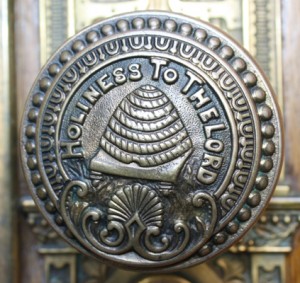 But whilst Ballard seems to draw a Jaradite conclusion to its origins, my more practical thought it that it originated from Masonry, wherein the symbol of the beehive is common from at least the 18th century. As Brigham Young was a freemason, just as was Joseph Smith, it seems to me that Masonry is a better origin of the bee and beehive symbol.(2) Still, it is fitting in the way Ballard worded this phrase derived from his understanding of the community of bees: “great things are brought about and burdens are lightened through the efforts of many hands.” As well as being drawn to honey, and bees and symbolism I can’t help but find an application that I am comfortable and excited to share as a visiting teacher.
But whilst Ballard seems to draw a Jaradite conclusion to its origins, my more practical thought it that it originated from Masonry, wherein the symbol of the beehive is common from at least the 18th century. As Brigham Young was a freemason, just as was Joseph Smith, it seems to me that Masonry is a better origin of the bee and beehive symbol.(2) Still, it is fitting in the way Ballard worded this phrase derived from his understanding of the community of bees: “great things are brought about and burdens are lightened through the efforts of many hands.” As well as being drawn to honey, and bees and symbolism I can’t help but find an application that I am comfortable and excited to share as a visiting teacher.
Consider again the Hebrew Deborah, symbolised as the Bee. Surely she would not have been victorious in battling the Canaanites alone. Her prophetic calling and assignment blessed her with the further capacity to direct as well as serve in righteousness. If we apply the ancient concept of Deborah as prophetess and combine it with the historical Masonic application of industriousness, then mix in Ballard’s direction to be committed to the “teachings of the Lord Jesus Christ,” we develop a message that is as sweet as any honey I have ever tasted or could imagine:
All women, like Deborah the prophetess, have the capacity to receive divine revelation and to direct armies when called and in righteousness. When we are commanded and enabled by Elohim, we work toward and witness mountains flowing. We are further called as industrious leaders and attendants to work in harmony towards a greater whole. In our devotion to Christ and His teachings, we know that by engaging in even small, righteous thoughts as well as in righteous works and acts, great things are brought about and burdens are lightened in His name.
THAT is my visiting teaching message. We are like Deborah. We are industrious. Hard subtances (think crystallised honey) can be softened to flowing when we work in concert with Christ. And our efforts—no matter how small—are infinitely important, and infinitely valued by Christ.
Basic Honey Butter Recipe (great on bread made with honey!):
3/4 cup softened butter, whipped with 1/4 cup liquid honey.
What conference messages struck you for the visiting teaching message you choose to share?
What fun recipes have you adapted or are inclusive of honey?
Do you have any nostalgic honey memories like me?
Notes:
1.Coogan, Michael D. The Old Testament, A Historical and Literary Introduction to the Hebrew Scriptures, Oxford University Press, 2011, 214, 219 and The Book of Judges, Old Testament, chapters 4 and 5.
2.From Roberts, Allen, The Craft and Its Symbols, Macoy Pub & Masonic Supply Co, 1985, 7: “We must assume that the Bee Hive became an important symbol in Freemasonry the way the other symbols entered it. It symbolized what the cathedral builders did and the way they did it. The bee definitely is industrious. He works hard and tirelessly, not for himself, but for the swarm. He has a strength and knowledge of materials that cannot be duplicated. He works in complete cooperation, and without dissention, with his fellow bees. He protects the Queen, refuses admittance to enemies, builds, makes honey, and lives in a society ruled by law. What bees do can be compared with the cathedral builders of centuries ago. … Undoubtedly, the operative masons saw their duplicate in the bees.”



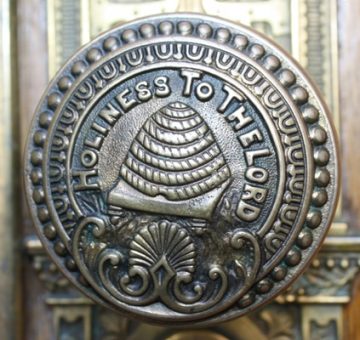
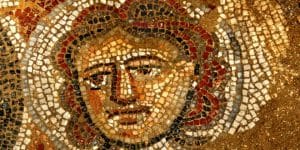
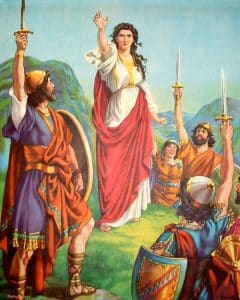
3 Responses
I loved this. Thank you!
I really, really love this! And you even tempt me to make and give honey butter to each of my sisters . . . or possibly just eat it all myself . . . 🙂
You’re reminding me of my dad’s honey whole wheat bread. Fresh bread was important to my parents, and since my mom’s wrists were too weak to knead it, she made the dough and Dad did the kneading. As a kid I thought the role reassignment and the sight of my dad’s arms covered to the elbows in flour was part of what made our family unique. So here’s my takeaway: industriousness matters; who is doing which part of the work much less so; there are beautiful and creative and tasty ways to include what matters to someone in the ritual of everyday life.